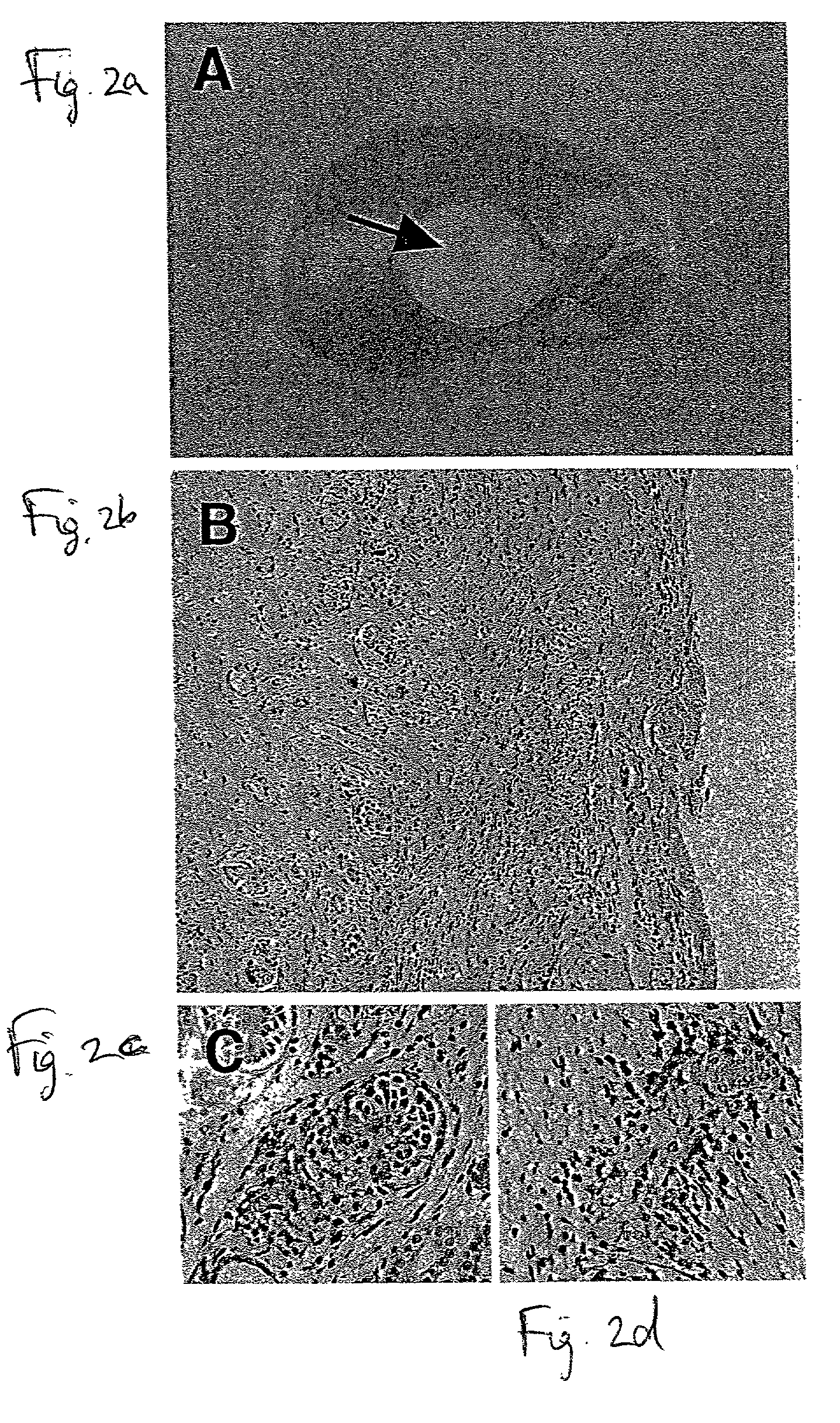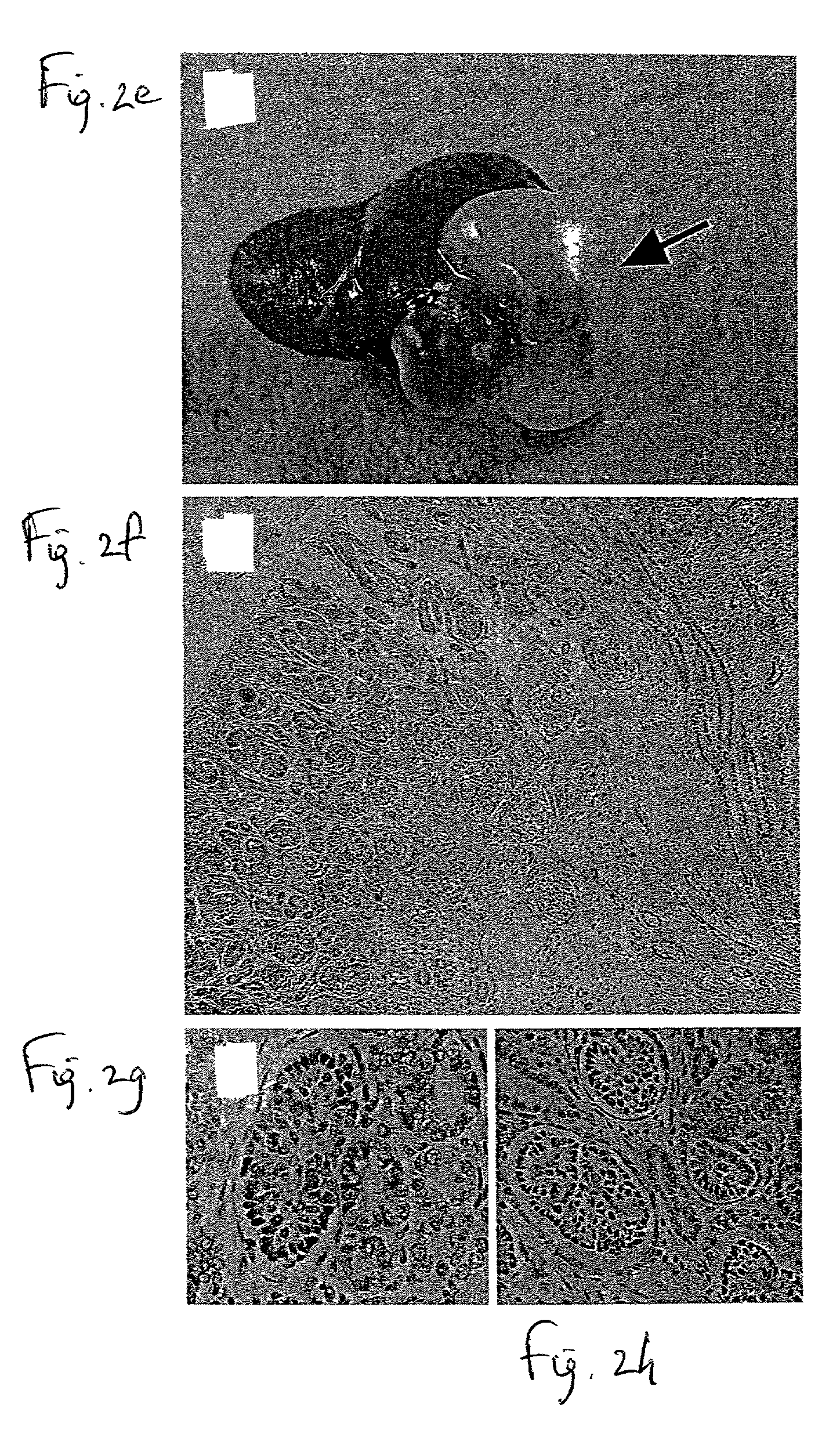Methods of kidney transplantation utilizing developing nephric tissue
a kidney and developing nephric technology, applied in the direction of immunological disorders, drug compositions, genetic material ingredients, etc., can solve the problems of kidney transplantation limited, kidney failure related deaths, weakening of the body's ability to fight infection,
- Summary
- Abstract
- Description
- Claims
- Application Information
AI Technical Summary
Problems solved by technology
Method used
Image
Examples
example 1
Transplants of Developing Nephric Tissue Obtained from 7-8 Week Human Fetuses Develop into Functional Nephric Organs Which are Fully Tolerated by Alloreactive Human PBMC
[0113] Minimization, or preferably complete avoidance, of human kidney allograft rejection constitutes a highly desired therapeutic goal for treatment of kidney disorders. Prior art approaches have shown that developing nephric tissue allografts induce attenuated alloimmune responses in comparison to adult-stage kidney allografts. While conceiving the present invention, it was hypothesized that the earliest developmental stage during which developing nephric tissue is sufficiently differentiated to develop into functional nephric organs following transplantation corresponds to the developmental stage during which alloimmune rejection of such grafts is optimally minimized or, possibly, completely eliminated. Thus, while reducing the present invention to practice, experiments identifying such an optimal stage of develo...
example 2
Nephric Tissue Transplants from 4 Week-Old Porcine Fetuses Develop into Morphologically Differentiated, Functional Nephric Organs Which are Fully Tolerated by Xenogeneic Human PBMC
[0137] Treatment of kidney disease via transplantation of human kidneys is limited by the availability of matching donor organs. One promising solution to this obstacle is to utilize xenogeneic nephric grafts, such as porcine metanephric grafts, which are considered to be an optimally compatible alternative to human grafts for transplantation due to these avoiding hyperacute rejection as a virtue of their being vascularized by host vessels instead of donor vessels, as would be the case when transplanting solid organ grafts (D. P. Hyink et al. (1996) Am J Physiol. 270:F886; B. Robert et al. (1996) Am J Physiol. 271:F744). Thus, minimization, or preferably complete avoidance, of porcine nephric graft rejection by human immune cells constitutes a highly desired therapeutic goal for treatment of kidney disorde...
example 3
Minimal Immunosuppression Enables Transplants of Nephric Tissue from 7- to 8-Week Human Fetuses or 4-Week Porcine Embryos to Treat Human Kidney Disease
[0154] While reducing the present invention to practice, as shown in Examples 1 and 2 respectively, transplants of nephric tissue from 7- to 8-week human fetuses or 4-week porcine embryos develop into morphologically differentiated, functional nephric organs which are fully tolerated by allo- or xeno-reactive human immune effectors, respectively, in the absence of any form of adjunct immunosuppressive treatment whatsoever.
[0155] Thus, transplants of the human and porcine nephric tissues mentioned hereinabove, being at a developmental stage during which tolerance thereof by allo- or xeno-reactive human immune effectors, respectively, is maximal, are utilized to treat human kidney disease with minimal adjunct immunosuppressive treatment in cases where such treatment is preferred.
[0156] As such, this aspect of the method of the present i...
PUM
| Property | Measurement | Unit |
|---|---|---|
| Time | aaaaa | aaaaa |
| Time | aaaaa | aaaaa |
| Time | aaaaa | aaaaa |
Abstract
Description
Claims
Application Information
 Login to View More
Login to View More - R&D
- Intellectual Property
- Life Sciences
- Materials
- Tech Scout
- Unparalleled Data Quality
- Higher Quality Content
- 60% Fewer Hallucinations
Browse by: Latest US Patents, China's latest patents, Technical Efficacy Thesaurus, Application Domain, Technology Topic, Popular Technical Reports.
© 2025 PatSnap. All rights reserved.Legal|Privacy policy|Modern Slavery Act Transparency Statement|Sitemap|About US| Contact US: help@patsnap.com



